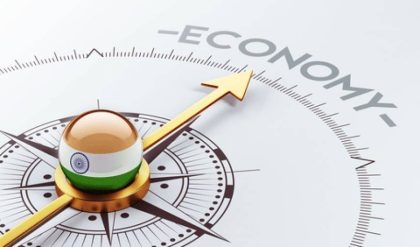The Planning Commission was set up in March, 1950 by a Resolution of the Government of India. The economy of India is based on planning through its five-year plans. Five year plans are developed, executed and monitored by the Planning Commission (Prime Minister is the ex-official Chairman). Now the planning commission is being replaced by the NITI Ayog (National Institution for Transforming India). Till date 12 five year plans have been launched by the planning Commission. The final approval to any five year plan is given by the National Development Council (NDC).
Eighth Five-Year Plan (1992–1997)
Time of 1989–91 was of political chaos that leads to economic instability in India and hence no five-year plan was implemented. Between 1990 and 1992, there were only Annual Plans. In 1991, India faced a crisis in Foreign Exchange (Forex) reserves, left with reserves of only about US$1 billion. Thus, under pressure, the country took the risk of reforming the socialist economy. P.V. Narasimha Rao was the twelfth Prime Minister of the Republic of India and head of Congress Party, and led one of the most important administrations in India’s modern history overseeing a major economic transformation and several incidents affecting national security. At that time Dr. Manmohan Singh (currently, Prime Minister of India) launched India’s free market reforms that brought the nearly bankrupt nation back from the edge. It was the beginning of privatisation and liberalisation in India.
Modernization of industries was a major highlight of the Eighth Plan. Under this plan, the gradual opening of the Indian economy was undertaken to correct the burgeoning deficit and foreign debt. Meanwhile India became a member of the World Trade Organization on 1 January 1995.This plan can be termed as Rao and Manmohan model of Economic development.
An average annual growth rate of 6.78% against the target 5.6% was achieved.
Ninth Five-Year Plan (1997–2002)
Ninth Five Year Plan India runs through the period from 1997 to 2002 with the main aim of attaining objectives like speedy industrialization, human development, full-scale employment, poverty reduction, and self-reliance on domestic resources.
During the Ninth Plan period, the growth rate was 5.35 per cent, a percentage point lower than the target GDP growth of 6.5 per cent.
Tenth Five-Year Plan (2002–2007)
· Attain 8% GDP growth per year.
· Reduction of poverty ratio by 5 percentage points by 2007.
· Providing gainful and high-quality employment at least to the addition to the labour force.
· Reduction in gender gaps in literacy and wage rates by at least 50% by 2007.
· 20 point program was introduced.
Target growth: 8% Growth achieved: 7.8%
Eleventh Five-Year Plan (2007–2012)
The eleventh plan has the following objectives:
Income & Poverty
· Accelerate GDP growth from 8% to 10% and then maintain at 10% in the 12th Plan in order to double per capita income by 2016–17
· Increase agricultural GDP growth rate to 4% per year to ensure a broader spread of benefits
· Create 70 million new work opportunities.
· Reduce educated unemployment to below 5%.
· Raise real wage rate of unskilled workers by 20 percent.
· Reduce the headcount ratio of consumption poverty by 10 percentage points.
Education
· Reduce dropout rates of children from elementary school from 52.2% in 2003–04 to 20% by 2011–12
· Develop minimum standards of educational attainment in elementary school, and by regular testing monitor effectiveness of education to ensure quality
· Increase literacy rate for persons of age 7 years or above to 85%
· Lower gender gap in literacy to 10 percentage point
· Increase the percentage of each cohort going to higher education from the present 10% to 15% by the end of the plan
Health
· Reduce infant mortality rate to 28 and maternal mortality ratio to 1 per 1000 live births
· Reduce Total Fertility Rate to 2.1
· Provide clean drinking water for all by 2009 and ensure that there are no slip-backs
· Reduce malnutrition among children of age group 0–3 to half its present level
· Reduce anaemia among women and girls by 50% by the end of the plan
Women and Children
· Raise the sex ratio for age group 0–6 to 935 by 2011–12 and to 950 by 2016–17
· Ensure that at least 33 percent of the direct and indirect beneficiaries of all government schemes are women and girl children
· Ensure that all children enjoy a safe childhood, without any compulsion to work
· Infrastructure
· Ensure electricity connection to all villages and BPL households by 2009 and round-the-clock power.
· Ensure all-weather road connection to all habitation with population 1000 and above (500 in hilly and tribal areas) by 2009, and ensure coverage of all significant habitation by 2015
· Connect every village by telephone by November 2007 and provide broadband connectivity to all villages by 2012
· Provide homestead sites to all by 2012 and step up the pace of house construction for rural poor to cover all the poor by 2016–17
Environment
· Increase forest and tree cover by 5 percentage points.
· Attain WHO standards of air quality in all major cities by 2011–12.
· Treat all urban waste water by 2011–12 to clean river waters.
· Increase energy efficiency by 20%
Target growth: 8.4% Growth achieved: 7.9%.
Twelfth Five-Year Plan (2012-2017)
The 12th five year plan (2012-17) document that seeks to achieve annual average economic growth rate of 8.2 per cent, down from 9 per cent envisaged earlier, in view of fragile global recovery. 12th five-year plan is guided by the policy guidelines and principles to revive the following Indian economy, which registered a growth rate of meagre 5.5 percent in the first quarter of the financial year 2012-13.
The plan aims towards the betterment of the infrastructural projects of the nation avoiding all types of bottlenecks. The document presented by the planning commission is aimed to attract private investments of up to US$1 trillion in the infrastructural growth in the 12th five-year plan, which will also ensure a reduction in subsidy burden of the government to 1.5 percent from 2 percent of the GDP (gross domestic product). The UID (Unique Identification Number) will act as a platform for cash transfer of the subsidies in the plan.
The plan aims towards achieving a growth of 4 percent in agriculture and to reduce poverty by 10 percentage points by 2017. The main aim of this plan is to achieve Faster, More Inclusive and Sustainable Growth.






Comments are closed.